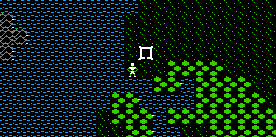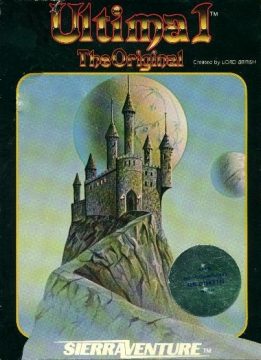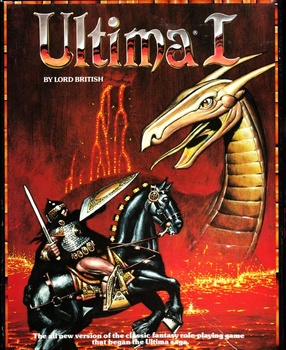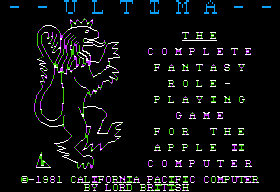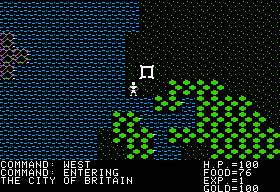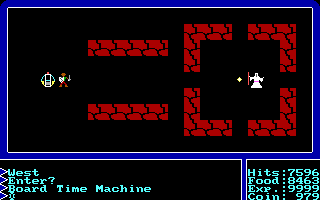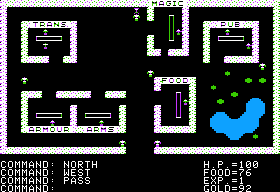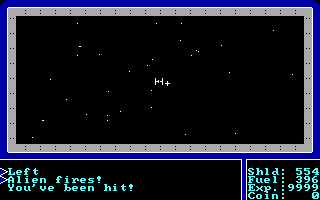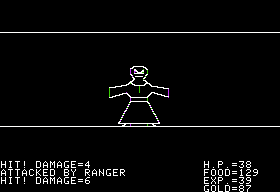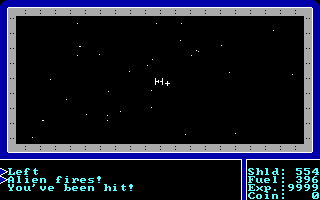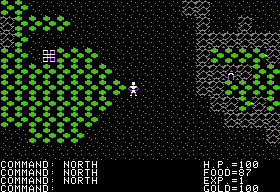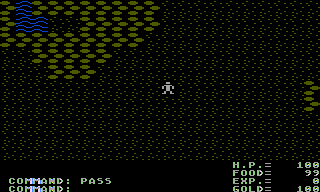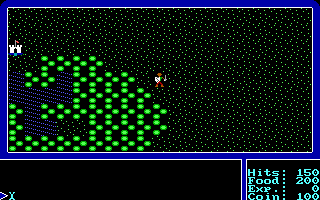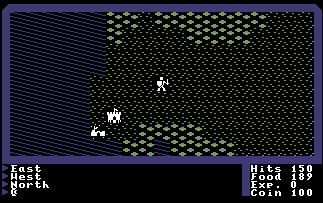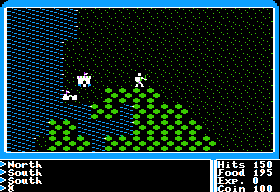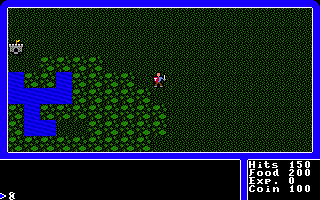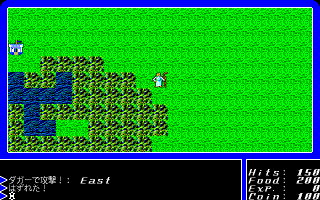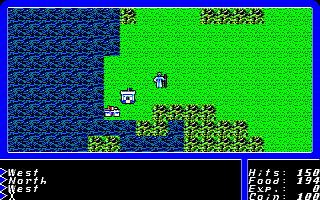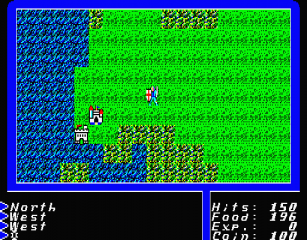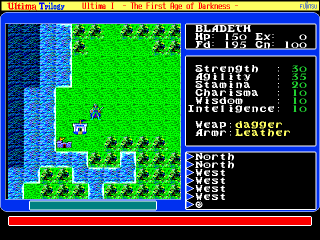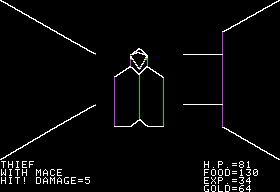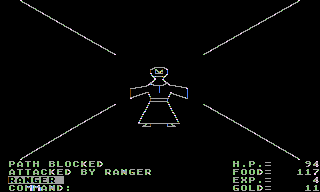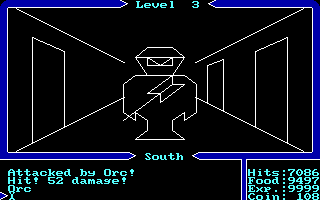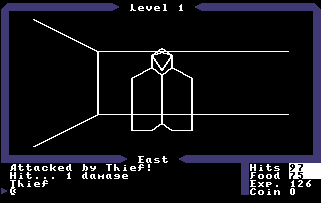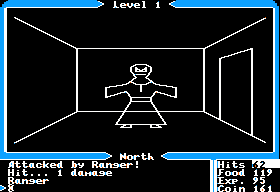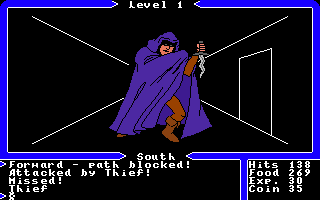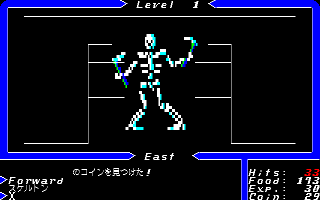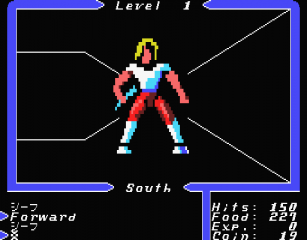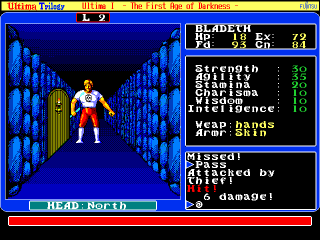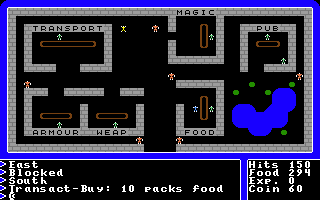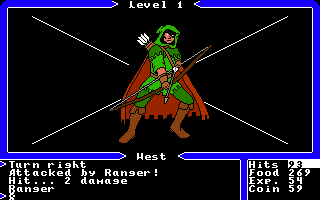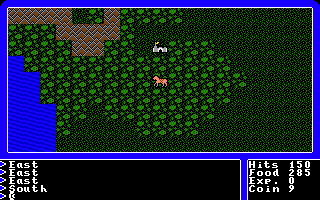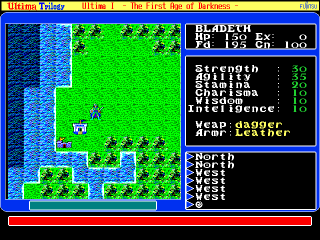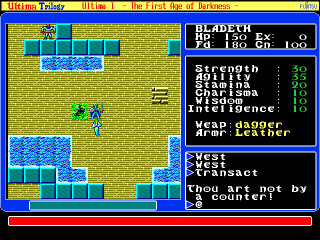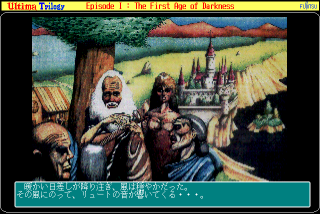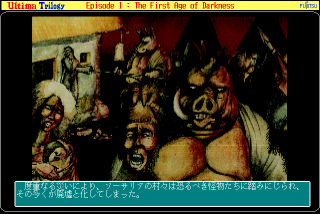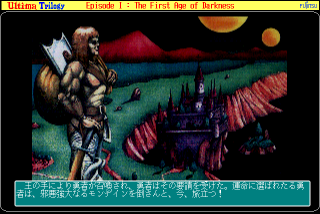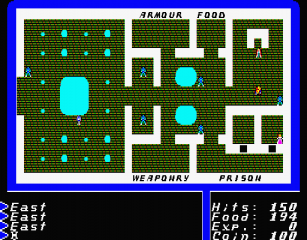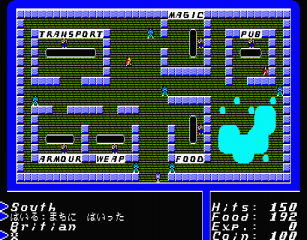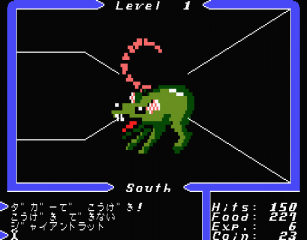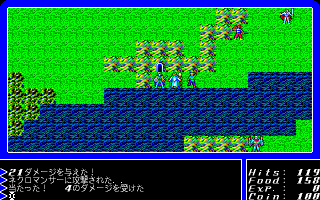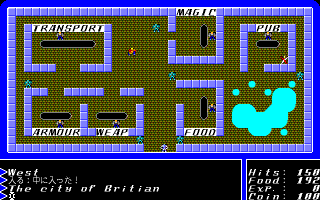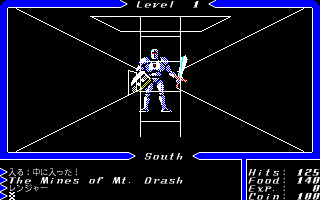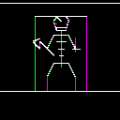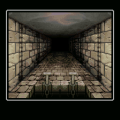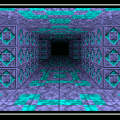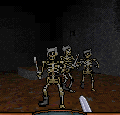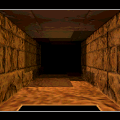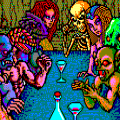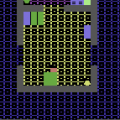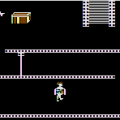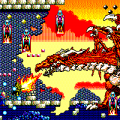- Ultima (Series Introduction)
- Akalabeth
- Ultima I: First Age Of Darkness
- Ultima II: Revenge of the Enchantress
- Ultima III: Exodus
- Ultima IV: Quest Of The Avatar
- Ultima V: Warriors of Destiny
- Ultima VII: The Black Gate
- Ultima VI: The False Prophet
- Ultima VII Part 2: Serpent Isle
- Ultima VIII: Pagan
- Ultima Underworld: The Stygian Abyss
- Ultima Underworld II: Labyrinth of Worlds
- Arx Fatalis
- Worlds of Ultima: The Savage Empire
- Ultima Worlds of Adventure 2: Martian Dreams
- Ultima IX: Ascension
- Lord of Ultima
- Ultima Online
- Ultima: Escape from Mt. Drash
- Ultima: Miscellaneous
- Richard Garriott (Interview)
Hail, noble one! Our land cries out for a stalwart hero, one who will brave the perils that wicked Mondain the wizard hath wrought upon the lands of Sosaria! The Evil One hath released a curse of monsters to overrun the land, and our defenseless people fall to the slavering hordes! No one is safe, though a young king named British remains steadfast in his vision of a peaceful, united land free from evil and fear. Will thou be the one to bring it about?
Fresh off his previous success and flush with $150,000 in cash, Richard Garriott started his college career determined to top his previous work. Enlisting the help of a friend, Ken W. Arnold, Ultima greatly expanded upon Akalabeth. The overworld of Sosaria now has colored graphics, explorable towns and castles, Kings for whom to do quests and more. Ultima was a groundbreaking program for the time, very complex and a critical and commercial darling, garnering rave reviews and 50,000 copies sold. The visuals of the game are highly impressive for 1981, displaying the lands of Sosaria with colored tiles and creating a far more expansive and less claustrophobic world than the competing mainframe and ‘roguelike’ RPGs of the era.
As the story goes, the evil wizard Mondain has already succeeded in conquering the four continents of Sosaria with his hordes of evil monsters and foul magic; the lands are now wastelands full of dark dungeons and slavering beasts, with civilization huddling in their isolated cities. Mondain is unstoppable due to his magic Gem of Immortality, which makes him both immortal and impervious to all forms of harm. You arrive a stranger to the lands of Sosaria, gaining power and prestige with the eight Kings of the realms, each waiting for you to prove yourself before they hand over one of four magic gems. While fighting monsters, you may also have the opportunity to rescue a princess in fine heroic tradition, who may be able to tell you what those gems are for, and how they can be used to stop Mondain.
So, the evil wizard is truly invincible. How to beat him, then? How about traveling back in time to before he became immortal? The ultimate goal of the game is to complete the quests of the Kings to gain magic gemstones needed to activate a Time Machine, which will send the player back in time to before the dark wizard Mondain has finished the Gem of Immortality, giving the player a fighting chance.
The game begins with an expanded character creation, where you can now pick from four different fantasy races (Human, Elf, Dwarf, Bobbit) and four classes (Fighter, Cleric, Wizard and Thief), each with slight boosts to a different statistic. Then the player is dropped onto a grassy field, next to Town Britain and Castle British. Towns contain shops to buy food, armor, weapons and transport, and pubs at which to have a mug of good cheer and hear gossip from the bartender (but don’t drink too much, or the serving wench will run off with your gold). The more larcenous-minded player can also try to steal from shops instead of paying honestly, which occasionally results in rare finds, but the Guards are no slouches in combat. Quests are given by one of the eight Kings scattered over the four continents of Sosaria, and consist of discovering a particular landmark or diving into a dungeon to slay a particular monster as in Akalabeth. The dungeon-diving in Ultima is exactly the same as in the previous game (the code for Ultima‘s dungeon crawling is the same Applesoft BASIC code used in Akalabeth), but the addition of magic to teleport up and down levels, fire magic missiles at enemies, and other effects combine to make dungeon-crawling more interesting. As an alternative to combing dark depths for gold, experience and treasure, the player can also rescue captive princesses in the castles for massive experience boosts. Statistics like Agility do not raise with experience level, but you can increase them by finding landmarks of power, or by completing quests given by the Kings. Experience doesn’t seem to do anything obvious, and most likely the only effect it has is on what monsters appear on the world and what items are for sale in shops.
These early Ultima games were a mash of different fantasy and sci-fi themes, reflecting the hobbies and tastes of the author. The dungeon monsters straight out of Dungeons & Dragons’ rulebooks are still present, in addition to such science fiction staples as lightsabers, phasers and reflective armor for the player to wield, and hovercraft and rocketships as potential transport next to the more typical fantasy horse, cart or sailing ship. One of the more infamous parts of the game is the requirement that, before a rescued Princess can reveal the location of the Time Machine, the player must first become a ‘space ace’. Becoming a Space Ace involves taking a rocketship off-planet (remember your vaccuum suit!) and launching into orbit, where a space station offers a choice of fighter ships for the player to use in picking off TIE-Fighter-shaped alien craft. This section of the game strongly resembles Doug Neubauer’s Atari 400/800 game Star Raiders and is essentially a clone, with the same hyperspace grid, lightspeed-jumping, space station docking and first-person shooting mechanics, and even similarly-shaped enemy ships. Richard Garriott’s official explanation of this part of the game years later was that he had space left over on the game disk and was simply trying to fill it up.
Ultima was originally released for the Apple II in June 1981, very close to the release date of Sir-Tech’s Wizardry, a series with which Ultima would have a sales rivalry throughout the first part of the ’80s. A port of the game was released for the Atari 8-bit computer series two years later by then-publisher Sierra On-Line, but Ultima remained fairly inaccessible for non-Apple gamers until 1986, when Origin Systems released a remade version. Retitled Ultima I: The First Age of Darkness, this enhanced version of the game is playable on multiple platforms, including the Apple II, IBM PC, Commodore 64, MSX and NEC PC-88/PC-98. The remake of Ultima Iincludes multiple improvements, the most immediately obvious of which being the vastly increased game speed due to it being written in assembly language instead of Apple BASIC. The game also has more colorful graphics with animated tiles as in Ultima III and IV, enemies wandering the overworld visibly instead of popping out of nowhere at random, a new title screen, and a general fix of various glitches which plagued the original game. This version of Ultima I is included in the various game collections later released, including Origin’s Ultima Trilogy and Electronic Arts’ Gold Classics Collection, among others; for this reason, among the PC versions of the games, Ultima II seems lower-tech than Ultima I. The Apple II, IBM PC and C64 versions of the game are largely identical to each other save for graphical quality. The Japanese-only MSX and PC-88/PC-98 versions published by Pony Canyon offer an entirely new, brightly-colored tileset in a higher resolution, which changes the feel while otherwise remaining the same game (and amusingly, appears to make Lord British look like a Daimyo in a castle full of tatami mats). The PC-88 and MSX versions are very similar in quality, while the PC-98 graphics are higher resolution and look cleaner. Pony Canyon also added a new original score, which seems jarring compared to the silence of the other versions. The FM Towns version was released by Fujitsu only as a special edition trilogy CD with Ultima II and Ultima III, and has vastly improved graphics (look at that glorious 16-bit water!) and sound, with yet another new score as well as better sound effects than any other port. The FM Towns Trilogy disk also includes an introduction movie with impressive painted art.
Much later in 1994, AppleIIGS programmer Bill (today Rebecca) Heineman, who had previously served as lead developer of Interplay’s The Bard’s Tale III and programmed the Apple IIGS port of Eric Chahi’s Out of This World, reassembled the Out of This World team to create a new definitive version of Ultima I with completely redrawn, high-resolution graphics and modern sound. This version was released by Vitesse Inc., and is the most technically superior version of the game. However, it is now extremely rare due to the distributor going out of business shortly after release. Very little information about this version of the game is available. It seems to have been available as a paid download from the company Shareware Solutions II for a while in recent years, but the store is currently unavailable due to the death of the proprietor, so the status of the AppleIIGS version is in limbo. As of writing, Paris-based programmers Brutal Deluxe Software are working on making this superior version of the game available again.
Comparison Screenshots – Overworld
Comparison Screenshots – Dungeon
Additional Screenshots – Apple IIGS
Additional Screenshots – FM Towns
Additional Screenshots – MSX2
Additional Screenshots – PC-98
